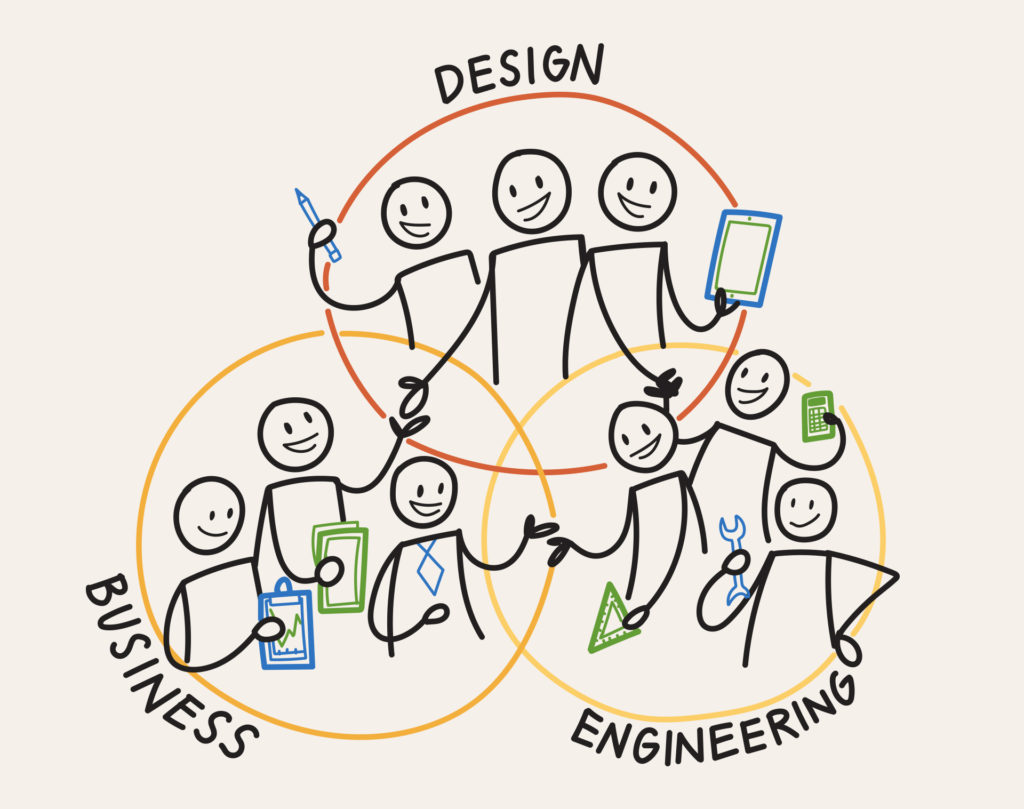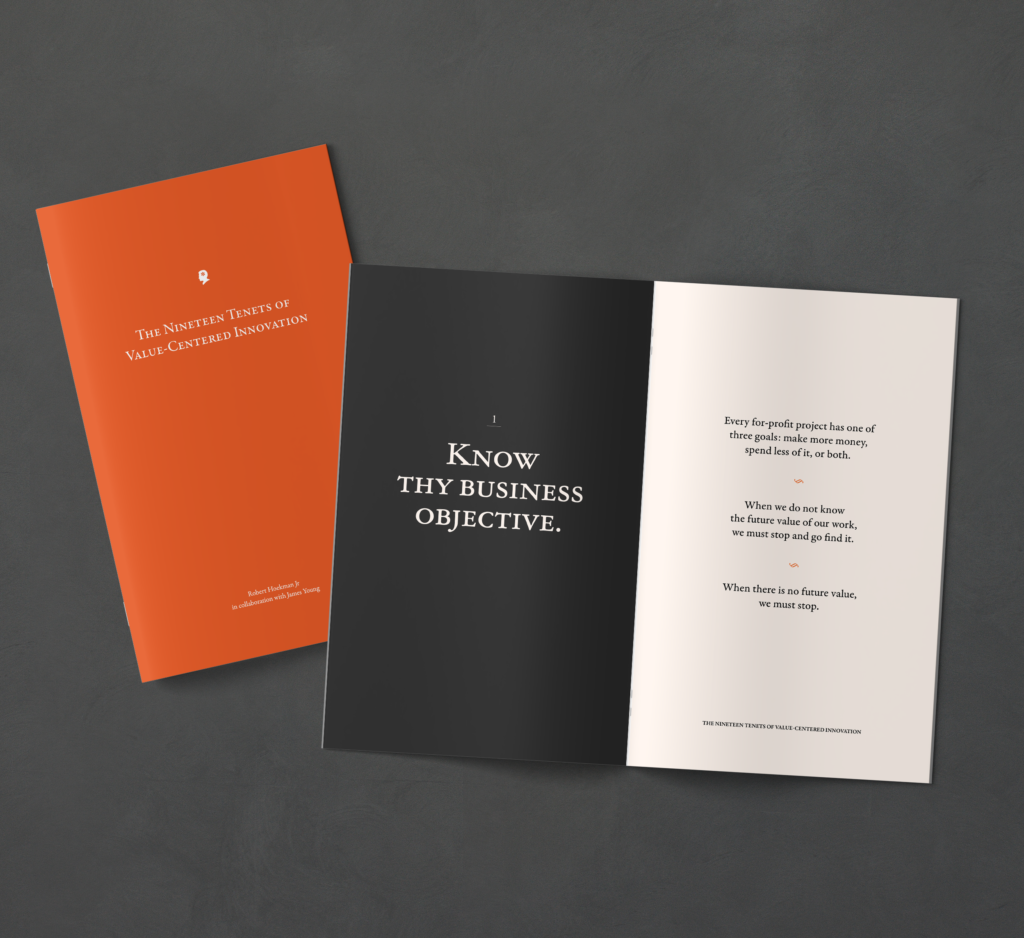Tangible has worked with a lot of companies, and a lot of product development teams within those companies. In our time, we’ve seen the same problems over and over again. Today, we’re happy to report we‘ve learned how to solve them.
Here’s what we’ve seen.
Every team wants to innovate, do valuable work, and prove their work was valuable, but can’t, and it’s always for the same reasons. It’s because within their innovation process:
- there is little to no collaboration
- there is no way to gather evidence that ideas are good or bad before investing in them
- the three core disciplines of product development—business, design, and engineering—all have their own agendas and concerns, so they almost invariably become blockers to each other’s success
As a result, many solutions never get delivered, some of those that do have no measurable effect, some even make things worse, and most of the time, no one really knows if the work they’re doing has had or will have a positive business effect.
We’ve been witnessing, working around, and studying this phenomenon for decades. For the past 5 years or so, we’ve been diligently trying to fix it.
And we’ve learned how.
We’ve learned how to make high-performing teams the rule instead of the exception. We’ve learned how to make innovation a practice instead of a fluke. And we’ve learned how to make decisions not by putting the user, business, or technology at the center of the conversation, but by centering decisions on what’s valuable for all three.
We’ve succeeded with our approach now under many conditions, with teams of all types. And we’ve developed a practicum to teach you to do the same. If the problems we’ve described here sound familiar, we’d love to tell you more. Get in touch.
In the meantime, we want to share three of our core principles that can help you right now.
1. Define the change
Pinpoint what action you can take, what product or feature you can deliver, or what service you can alter that will have both a significant user benefit and a significant business benefit, and then express what precise change must occur to achieve it.
2. List the obstacles
Next, ask: Why hasn’t this newer, better world already been achieved? What’s preventing it from existing right now? And why?
3. Work in a circle, not a chain
Disassemble your silos, and unlearn what you know about development phases. Instead, bring together your product’s representative for the business, technology, and user, and plan as a group how to enact the change, and how to measure whether it had the desired effect.

Of course, every situation has more to it than can be captured in a blog post, and every team has its own challenges to implementing these practices, but the core ideas are exactly this simple.
This trio of tenets is the most basic version of what we refer to as Value-Centered Innovation (VCI). They are, in fact, just 3 of 19 tenets.
In the coming months, we’ll be talking about these and the other tenets a lot. Our hope is to help you and every team you work with learn to do what our clients have learned to do: innovate.
If you’d like to get a jump on everyone else—for example, your competitors—get in touch, and we’ll tell you about our Value-Centered Innovation Practicum for Teams.
One more thing.
If you’re among the first 1,000 people to contact us, we’ll send you a free pre-release eBook of The 19 Tenets of Value-Centered Innovation.

Just fill out this form:

